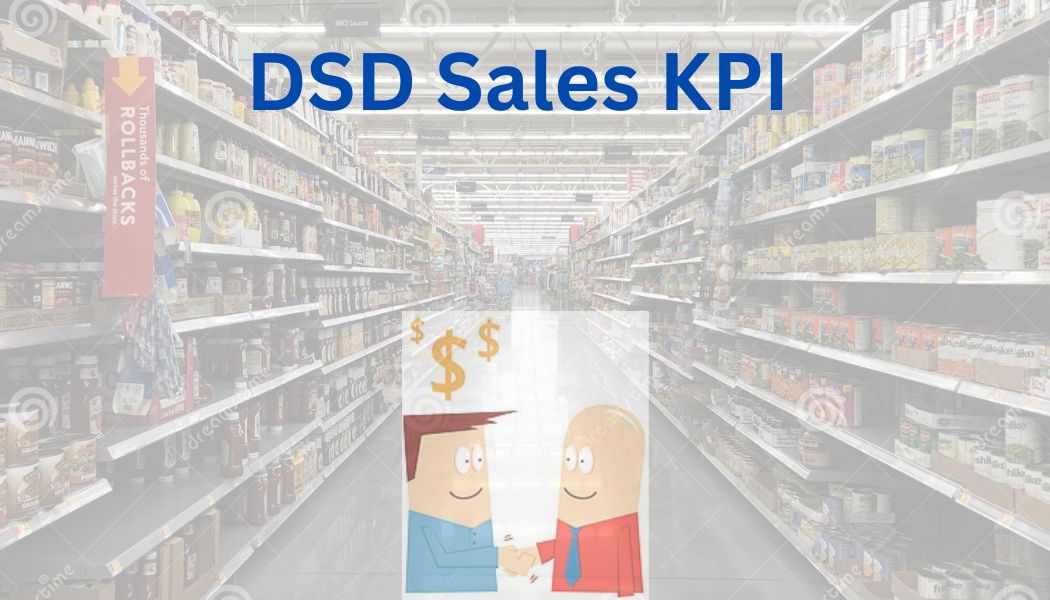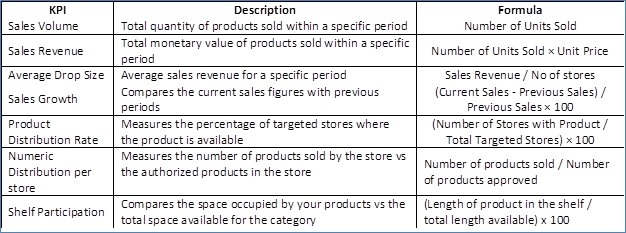
DSD Sales KPI: Evaluate the performance of the DSD in-store vendors
In Mastering Direct Store Delivery DSD Sales: 9 In-Store Steps, I explained why the process associated with DSD Sales differs from any other type of face-to-face sales due to the nature of a direct store delivery model. Since the sales growth of the DSD model relies heavily on the in-store sales persons, we need to monitor their performance via DSD sales KPI. In this article, I define the DSD sales KPI that helps evaluate the performance of in-store vendors. I will also provide formulas to calculate these KPIs, empowering organizations to measure and optimize their DSD sales operations.
How Are Sales Made in a DSD Model?
Purchases of a store under a DSD model are made by the store manager thus, the relationship-building aspect of DSD sales requires the salespeople to establish direct connections with store managers and staff, foster personalized engagement, and having a deeper understanding of each store’s needs. To accomplish this, besides selling products, the DSD salesperson has to perform additional services, like In-store merchandising, shelf Inventory management, price and promotion execution, and in-store forecasting.
In-Store Sales Goals of a DSD
The primary goal of in-store vendors in a DSD model is to maximize sales and increase market share. To achieve this, I define 6 key objectives:
Sales volume per store and territory: According to Insider, last-mile delivery accounts for 53% of the total shipping cost. The store salesperson must ensure that the sales order of the store exceeds the delivery cost of the order to the store.
Number of SKUs sold: Every store has a set of products approved to be sold in the store. The ideal situation is that the store has in the shelves all of the products approved for the store. The seller must strive to achieve this goal.
Product Placement: In-store vendors aim to secure optimal product placement within the store, ensuring visibility and prominence on shelves or display racks. Strategic placement helps attract customers’ attention, resulting in increased sales opportunities.
Shelf Space Management: Effective utilization of shelf space is crucial. The sale person must ensure their products have sufficient space, are well-organized, and align with customer preferences. Proper shelf management increases the chances of product discovery and encourages purchases.
Inventory Management: In-store vendors monitor inventory levels to ensure products are adequately stocked and avoid stockouts or overstocking. By maintaining optimal inventory levels, they can meet customer demand and maximize sales potential.
Merchandising and Promotions: In-store vendors focus on creating eye-catching displays, implementing attractive promotions, and utilizing point-of-sale materials to capture customers’ attention and influence purchasing decisions. Engaging visual merchandising and effective promotional strategies contribute to increased sales.
DSD Sales KPI
We evaluate the performance of DSD salespersons at three levels: per store, per territory, and product. We need to define the KPIs that can measure compliance with the goals set up within these three levels. The table below shows the most used DSD sales KPI.

I hope this article on DSD sales KPI has been helpful to you. I will continue to post information related to warehouse management, distribution practices and trends, and the economy in general. If you want to know how Laceup’s solutions can help you to streamline product returns, click the link below to schedule an exploratory meeting.
There is a lot of relevant information on our channel. Check out this video on Distribution KPI.


Sorry, the comment form is closed at this time.